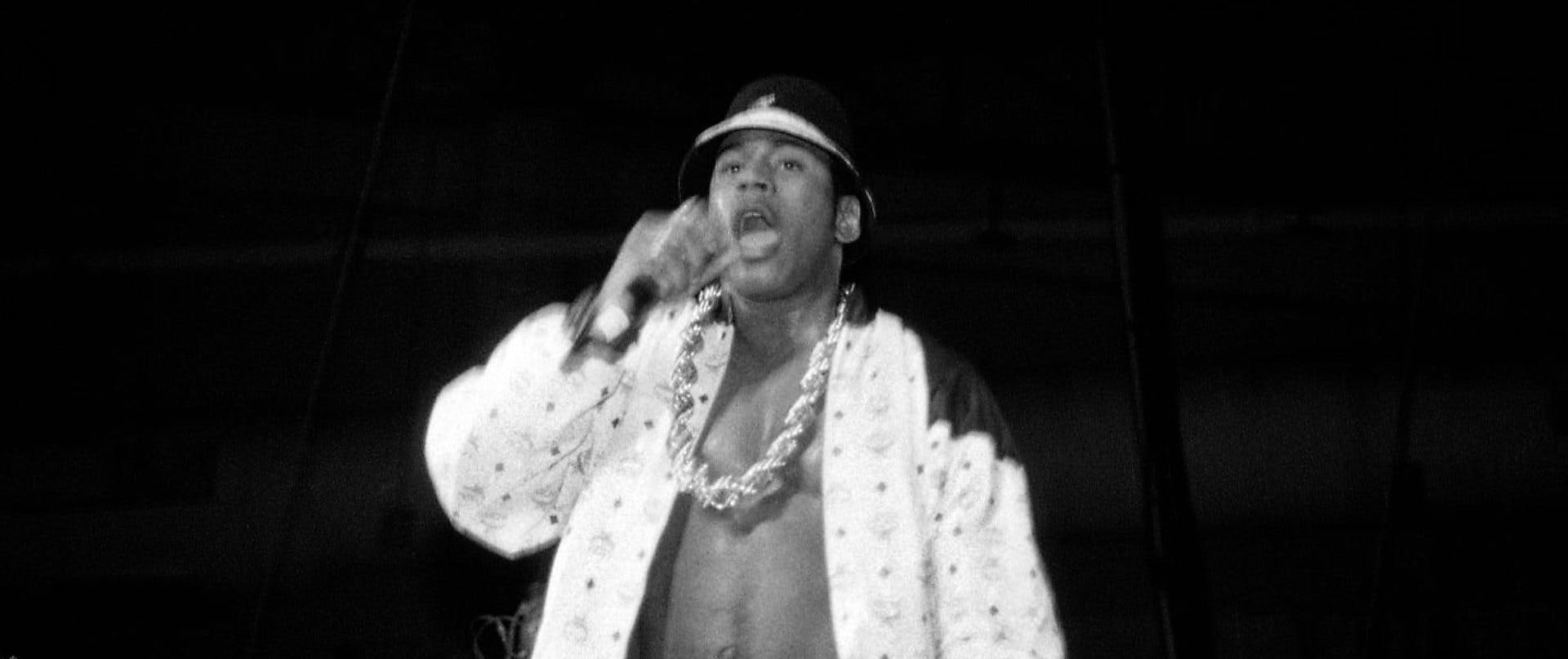Rap is a contact sport. Sometimes a beef results in a single physical incident – KRS-One famously throwing PM Dawn off the stage at the Sound Factory in 1992 after the pop rappers dissed the Boogie Down Productions leader in an article, for instance. Other battles go from record (or the stage) to something far more serious, namely death. Regardless of the outcome, the genre has enjoyed some of its best, most explosive music because of beefs. As the Proverb says: iron sharpens iron.
LL COOL J v. Kool Moe Dee (Circa 1987 – 1990)

It allegedly started with a seemingly innocuous boast. “I’m only 18 makin more than your pops,” LL Cool J spit on his innovative “The Do Wop,” a story-driven album cut from his double platinum 1987 project, Bigger And Deffer aka BAD. Several of Uncle L’s predecessors took umbrage with LL’s ultra-cocky rhymes, notably Kool Moe Dee. Later in 1987, the Treacherous Three member released his How Ya Like Me Now LP. The LP covered featured a red Kangol – LL’s signature head covering – under the front left tire of his Jeep. “I’m bigger and better, forget about deffer,” Kool Moe Dee rapped on the title track, setting off a rivalry that led to the vicious volley of LL’s “Jack The Ripper” and Kool Moe Dee’s “Let’s Go.” LL issued the final blow three years later on “To Da Break Of Dawn,” ending one of rap’s best and longest-running feuds to that point, with all the animus staying on wax.
Compton’s Most Wanted/MC Eiht vs. DJ Quik v. (Circa 1990 – 1996)
It’s A Compton Thang, MC Eiht rapped, “Eiht ain’t no punk, so learn it quick/Oh yes, PS, CMW and you can get my Duck Sick.” Eiht dropped a similar line a year later on 1991’s “Def Wish.” The line(s) caught the ear of emerging rapper-producer DJ Quik, who took the lyric as a slight. DJ Quik dissed CMW on his underground song “Real Doe.” CMW threw in what appeared to be actual DJ Quik disses on “Def Wish II” and “Duck Sick II” in 1992. The rivalry reached its zenith in 1994 when DJ Quik released “Dollas & Sense,” a scathing shot at MC Eiht that was initially included on Death Row Records’ Muder Was The Case” soundtrack and again on Quik’s 1995 album Safe + Sound. After several tense years, the two reconciled and recorded together in the 2010s.
Death Row Records vs. Everybody (Circa 1992 – 2000s)

Death Row Records came in the game with beef. It started with Dr. Dre, The D.O.C. and Michel’le getting “released” from their contracts with Eazy-E’s Ruthless Records. Eazy sued (and won) claiming his only did so while under duress from Death Row thugs. From there, Death Row and its artists targeted a wide range of acts, including Ice Cube, Luke, Tim Dog, and Eazy-E on Dr. Dre’s 1992 opus, The Chronic. In 1995, Death Row co-owner Suge Knight kicked off the imprint’s beef with Puffy’s Bad Boy Entertainment by taking a not-so-subtle swipe at Diddy’s omnipresence in the work of his artists’ songs and videos. That jumped off major friction, which only increased exponentially once 2Pac joined the company. Dr. Dre and Snoop Dogg’s subsequent departures made them targets, too, both in song and in the streets, even after the deaths of both 2Pac and The Notorious B.I.G. Master P, who signed Snoop Dogg to his No Limit Records in the late 1990s, also had to fend off Death Row’s thug tactics.
Common vs. Westside Connection (Circa 1994 – 1997)
Then recording as Common Sense, the Chicago rapper likely had no intention of igniting a serious beef when he recorded 1994’s “I Used To Love H.E.R.” The Windy City rhymer’s love letter to hip-hop documented its evolution and, in his opinion, some of the negative attributes it adopted along the way. He made a point to say he wasn’t salty she (Hip-Hop) was with the Boyz N The Hood, a nod to either 1987 Eazy-E’s song or the 1991 film, or both. Ice Cube, who wrote the former and starred in the latter, took offense to Common’s song and his protégé Mack 10 featured the scathing “Westside Slaughterhouse” song on his 1995 eponymous LP. Mack 10 leveled disses toward Common in his verse and Ice Cube rapped, “Used to love her, mad ‘cause we fucked her/Pussy-whipped bitch with no Common Sense.” Common returned like David going at Goliath in 1996 with “The Bitch In Yoo,” focusing on Ice Cube, but unleashing some sharp slights at Mack 10 and WC, too. Before things escalated and with the specter of the recent deaths of 2Pac and The Notorious B.I.G. hanging over rap, Ice Cube and Common met in Chicago with Minister Louis Farrakhan in 1997 to end the beef.
50 Cent vs. Entertainers (Circa 1999 – today)

50 Cent knows how to get people’s attention. The Queens, New York rapper’s “How To Rob” was featured on the In Too Deep soundtrack in 1999, but it hardly stayed there. The tongue-in-cheek cut featured 50 Cent fantasizing about how he’d rob everyone from Ma$e and Ol’ Dirty Bastard to Slick Rick and Big Pun, among many, many others. He said he’d kidnap Lil’ Kim and hold her for ransom, imagining that Puffy would pay the bill. Although clearly a joke, the response from rappers was hardly warm. Wu-Tang Clan members weren’t laughing and when 50 Cent was shot in 2000 outside of his grandmother’s house, many surmised that it may have been in retaliation for “How To Rob.” When 50 Cent reemerged, he took aim at Ja Rule, whom he said was watering rap down. From there, 50 Cent beefed with virtually everyone, from JAY-Z and Fat Joe. For 50 Cent, beef has been big business.





